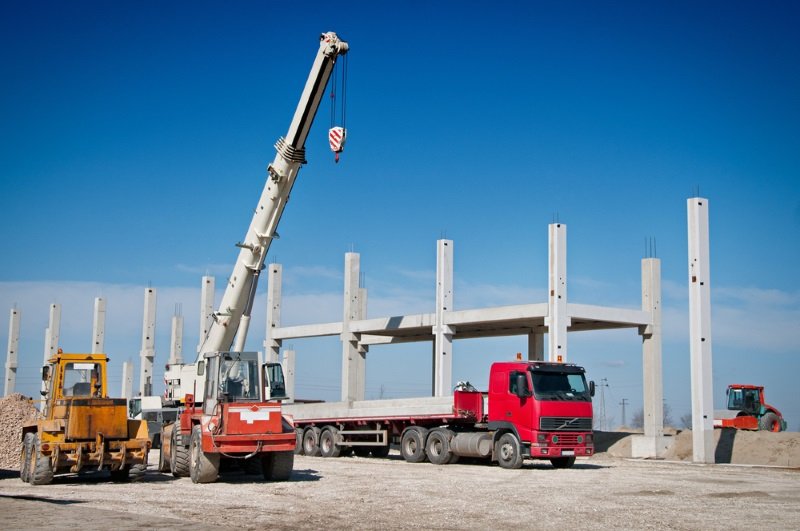In the realm of construction, infrastructure development, and industrial operations, the need for efficient and reliable lifting solutions is paramount. Cranes, with their towering presence and immense lifting capabilities, stand as indispensable assets in a wide range of projects, from erecting skyscrapers and bridges to handling heavy machinery and materials. However, hiring a crane entails more than just selecting the first available option; it requires careful consideration of various factors to ensure safety, efficiency, and project success.
In this comprehensive guide, we’ll delve into the intricacies of hiring a crane, unraveling the essential things you need to know to make informed decisions and navigate the process with confidence. From understanding different crane types and their applications to evaluating rental providers and optimizing performance on the job site, we’ll equip you with valuable insights and tips to empower your lifting endeavors.
Understanding Crane Types and Applications
Before diving into the hiring process, let’s start by familiarizing ourselves with the different types of cranes and their respective applications:
- Tower Cranes: Tower cranes are ubiquitous in urban construction projects, towering above building sites with their imposing height and reach. They excel in lifting heavy materials and equipment to great heights, making them ideal for high-rise buildings and large-scale construction projects.
- Mobile Cranes: Mobile cranes offer versatility and mobility, making them suitable for a wide range of lifting tasks in various environments. From rough-terrain cranes for outdoor construction sites to all-terrain cranes for urban and industrial settings, these cranes provide flexibility and accessibility.
- Crawler Cranes: Crawler cranes are designed for stability and mobility on rough terrain and soft ground. Equipped with tracks instead of wheels, they excel in traversing challenging environments such as construction sites, industrial facilities, and infrastructure projects.
- Overhead Cranes: Overhead cranes, also known as bridge cranes or gantry cranes, are commonly used in industrial settings such as warehouses, factories, and manufacturing facilities. They operate on overhead rails or beams, providing efficient material handling and lifting capabilities for heavy loads.
- Telescopic Cranes: Telescopic cranes feature a telescoping boom that can extend and retract to reach varying heights and distances. These cranes are versatile and can be deployed in diverse applications, including construction, maintenance, and event staging.
Key Considerations When Hiring a Crane
Now that we have an understanding of different crane types, let’s explore the important things you need to know when hiring a crane:
- Lifting Requirements: Determine the specific lifting requirements of your project, including the maximum weight of loads to be lifted, desired reach and height, and any specialized lifting attachments or configurations needed.
- Site Conditions: Assess the site conditions, including terrain type, ground stability, and access constraints, to determine the most suitable crane for the job. Consider factors such as space availability, overhead obstructions, and proximity to utilities or structures.
- Safety and Compliance: Prioritize safety when hiring a crane, ensuring that the equipment and operators adhere to industry safety standards and regulations. Verify that the crane rental provider conducts regular maintenance, inspections, and safety training for operators.
- Rental Provider Reputation: Research and evaluate crane rental providers based on their reputation, experience, and track record. Look for companies with a proven history of reliability, customer satisfaction, and adherence to deadlines.
- Insurance and Liability Coverage: Verify that the crane rental agreement includes comprehensive insurance coverage for the equipment, operators, and third-party liabilities. Understand your responsibilities and liabilities in case of accidents, damages, or delays.
- Rental Terms and Conditions: Review the rental agreement carefully, paying attention to terms and conditions such as rental duration, rates, delivery/pickup logistics, and payment terms. Seek clarification on any ambiguities or exclusions before signing the contract.
- Operator Competency: Ensure that the crane operators provided by the rental company are experienced, certified, and trained to operate the specific crane model being hired. Competent operators play a crucial role in maximizing crane performance, productivity, and safety on the job site.
- Technical Support and Maintenance: Confirm that the rental provider offers technical support, maintenance services, and 24/7 emergency assistance as needed. Prompt resolution of equipment issues and breakdowns is essential to minimizing downtime and project delays.
Optimizing Crane Performance and Efficiency
Once you’ve selected the right crane and finalized the rental agreement, consider the following tips to optimize crane performance and efficiency on the job site:
- Pre-Operational Checks: Conduct pre-operational checks and inspections to ensure that the crane is in proper working condition and complies with safety standards. Verify that all components, systems, and safety devices are functioning correctly before commencing lifting operations.
- Load Planning and Rigging: Plan and coordinate lifting operations carefully, considering factors such as load weight, center of gravity, rigging configuration, and environmental conditions. Use appropriate rigging equipment and techniques to secure loads safely and prevent shifting or instability.
- Communication and Coordination: Establish clear communication and coordination protocols among crane operators, signalpersons, spotters, and other personnel involved in lifting operations. Use standardized hand signals, radios, or communication systems to convey instructions and ensure safe, synchronized movements.
- Adherence to Safety Protocols: Strictly adhere to safety protocols, including load capacity limits, boom angle restrictions, and operational guidelines specified by the crane manufacturer and regulatory authorities. Conduct regular safety briefings and toolbox talks to reinforce safe work practices and hazard awareness.
- Monitoring and Supervision: Maintain ongoing monitoring and supervision of lifting operations to identify potential hazards, address emerging issues, and ensure compliance with safety procedures. Assign qualified personnel to oversee crane operations and intervene if safety risks arise.
- Documentation and Record-Keeping: Keep detailed records of crane inspections, maintenance activities, operator certifications, and lifting operations for compliance, audit, and incident investigation purposes. Document any incidents, near misses, or safety concerns to facilitate continuous improvement and risk mitigation.
Conclusion: Empowering Your Projects with Effective Crane Hire
Hiring a crane is a significant decision that requires careful consideration of various factors to ensure safety, efficiency, and project success. By understanding different crane types, evaluating rental providers, and prioritizing safety and compliance, you can navigate the process with confidence and empower your lifting endeavors.
Whether you’re undertaking a construction project, infrastructure development, or industrial operation, the right crane hire can provide the lifting capabilities and reliability needed to overcome challenges and achieve your project goals. With thorough planning, communication, and adherence to safety protocols, you can harness the power of cranes to elevate your projects to new heights of success.





